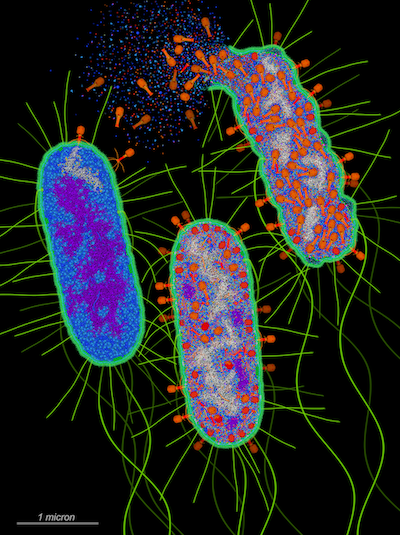Molecular Landscapes by David S. Goodsell
Bacteriophage T4 Infection, 2023
Acknowledgement: Illustration by David S. Goodsell, RCSB Protein Data Bank and Scripps Research. doi: 10.2210/rcsb_pdb/goodsell-gallery-048
Snapshots from the life cycle of bacteriophage T4. At left, a bacteriophage (red) is injecting its DNA genome (white) into an Escherichia coli cell. At center, the bacteriophage has taken over the cell, destroying the cellular DNA (purple) and forcing the cell to make many new copies of itself. At right, the bacteriophage produces a channel-forming protein (magenta) that pierces the inner cell membrane, allowing lysozyme enzymes to break down the peptidoglycan sheath (fibrous molecules shown in turquoise between the two cellular membranes) that supports the cell. The cell bursts, releasing several hundred new bacteriophages.
Many structures of parts of bacteriophage T4 are available in the PDB archive, including the head that holds the DNA in PDB ID 7vs5 (mature form) and 7vrt (immature form), and the baseplate with the injection machinery in PDB ID 5iv5.
This image was recognized by Wikimedia Commons with the National Jury's Choice Award (USA) in the non-photographic media category of the 2023 Wiki Science Competition (non-photographic media).




